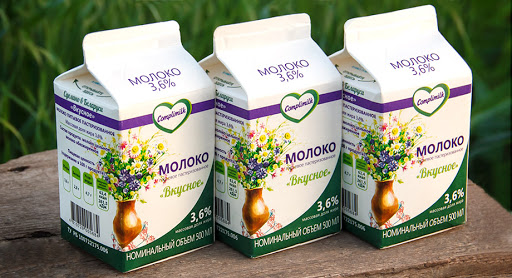For the first time since spring, Moscow has become one of the top five leaders in vaccination
In the two weeks since the last RBC count, the share of Russians who have received at least one dose of the CORONAVIRUS vaccine has increased by 3.13 percentage points (from 13.60% of the total population to 16.73%). As of June 29-July 5, 24.5 million people received their first vaccination. RBC requested information on how the vaccination campaign is going from the regional authorities, and also studied information from open sources.
11.72% of the total population of RUSSIA, or 17.1 million people, are fully vaccinated against covid-19 . For two weeks, this figure rose by 2.9 percentage points.
New regions in the top ten for the first dose of the vaccine
According to the data for June 29 - July 5, most of those vaccinated with at least one dose are still in Chukotka (33.07%), in the Belgorod region (30.86%) and the Nenets administrative district (24.80%). In addition to them, the top ten in terms of the proportion of the population who started vaccination included:
Moscow - 23.71%; Mordovia - 23.36%; Moscow region - 23.30%; Tyumen region - 22.98%; Sakhalin Region - 22.49%; Magadan region - 21.82%; Yakutia - 21.48%.Sakhalin left the top 5 of the ranking, and Moscow got into it for the first time since spring. The Moscow region also entered the top ten regions where the population received at least one dose of the vaccine. Tuva (19.83%) dropped out of the top ten.
Demand for vaccination in Moscow and Moscow region
During these two weeks, the number of Muscovites who received their first coronavirus vaccination increased by almost 8 percentage points. The Moscow region is only slightly behind the capital, the number of those who received at least one dose since the last count has increased by 6.43 percentage points there.
Moscow became the first region to introduce mandatory vaccination of most catering, service, healthcare, social workers and other Muscovites who often come into contact with other people. Employees who will be suspended from work due to the lack of a coronavirus vaccination will not receive a salary for the period while they are not working, the capital’s operational headquarters explained. With a difference of several minutes, almost similar measures became known in the Moscow region. Then, for the vaccinated in the capital, a number of privileges were earned, in particular QR codes, by which the vaccinated can now get to restaurants and cafes. Similar measures were introduced in the Moscow region.
In addition, an active fight against false vaccination certificates began in Russia, and those who acquired them (regardless of whether the certificates were used) were threatened with at least a year in prison. Since the beginning of the year, 44 criminal cases have been opened in Russia for forging medical documents related to COVID-19.
Despite the fact that at the end of June-July the CoviVac vaccine ran out in Moscow, and then the EpiVacCoron vaccine, by July 3, vaccination in the capital had gained “good momentum,” Mayor Sergei Sobyanin announced. In total, 3.5 million pairs of doses of Sputnik V, EpiVacCorona and KoviVac vaccines were delivered to the city, RBC was told in the capital's depzdrav. How many of them are accounted for by a particular drug, they did not specify, but added that deliveries go almost daily and there are enough vaccines to cover the demand among the townspeople. According to information on the website of the operational headquarters on July 6, one can get vaccinated in Moscow only by Sputnik.
Which regions have declared mandatory vaccination against coronavirus. Map Society
Stable top three
In terms of the share of those fully vaccinated by July 5, the Moscow Region (14.30%) is slightly ahead of the capital (14.22%), but neither region is in the top ten.
The first three places, as in the case of those vaccinated with only one dose, in this category are occupied by Chukotka (27.16%), Belgorod Region (21.63%) and NAO (20.84%). At the same time, the proportion of those who have just started vaccination and those who have already completed it in these regions has increased in two weeks since the last count:
in Chukotka — by almost 3 p.p. among those who received one dose, and by 1.46 p.p. from the population among fully vaccinated; in the Belgorod region — by 4.85 p.p. among those who started vaccination, by 2.54 p.p. from the population among fully vaccinated; in NAO by 2.29 p.p. among those who received one dose, and by 1.74 p.p. from the population among fully vaccinated.Of these three regions, mandatory vaccination for workers in a number of areas was introduced only in the NAO.
Chechnya: from outsiders to the top twenty
In the top three in terms of primary vaccination rates over the past two weeks, in addition to Moscow and the Moscow region, Chechnya has broken out. The number of people vaccinated with one dose of the vaccine increased by 6.13 p.p. compared to the latest data.
Back in May, Chechnya was among the outsider regions in terms of vaccination, and now it ranks 21st among the regions with the largest share of those vaccinated with at least one component. This share in the region over the past two weeks has increased from 11.7 to 17.9% (or up to 267.5 thousand of the population, as of July 5). Deputy Prime Minister of Chechnya Vakhit Usmaev said that the republic "continues to take a leading place in terms of vaccination rates among other regions." In total, 300.6 thousand doses of three vaccines (Sputnik V, EpiVacCorona and KoviVac) were delivered to the republic, RBC was told in the regional Ministry of HEALTH. On June 23, the HEAD of the republic, Ramzan Kadyrov, informed President Vladimir Putin about the shortage of vaccine in Chechnya.
In terms of the share of fully vaccinated population (7%), the region is still among the lagging behind, ranking 81st out of 85. In two weeks since the last count, the number of people who completed vaccination there has increased by 1.43 percentage points. from the total population.
Kadyrov announced an increase in hospitalizations of patients with COVID-19 in Chechnya Society
Vaccination in lagging regions
Since March, Dagestan has closed the group of regions lagging behind in vaccination. In the two weeks since the last count, the share of those who received at least one dose of the vaccine there has increased by less than 1 p.p. In total, 4.84% of people in Dagestan started vaccination, and only 3.24% of the population were fully vaccinated. Despite this, there are no difficulties with vaccination in the region, and doctors "are doing a lot of explanatory work with the population, which is increasingly resonating," RBC was told in the Ministry of Health of Dagestan.
Among the regions where less than 5% were fully vaccinated is Kabardino-Balkaria, but there the proportion of fully vaccinated is higher - 4.71%. As RBC was informed in the Ministry of Health of the region on July 1, 70.9 thousand people received one dose in the republic, 40.9 thousand were fully vaccinated. As of July 6, the number of those who had just started vaccination increased to 78.9 thousand people , and the number of those who completed it increased to 43.2 thousand. On June 22, the authorities of Kabardino-Balkaria asked the Ministry of Health to supply more coronavirus vaccines to the republic. As of July 1, a total of 83.9 thousand vaccines were delivered to the region, RBC was informed in the republican Ministry of Health.
COVID-19 vaccination queues in Russia. Photo report Photo gallery
Vaccine deficiency
Representatives of several regions told RBC about the emerging temporary shortage of vaccines due to rush demand. So, in the Novgorod region on July 2, there was a shortage due to the increased demand for vaccination, in connection with which the vaccination with the first component was suspended for several days at mobile points. Delivery of the vaccine was expected on 5 July.
“For the second component, we still have enough vaccine, and for the first we are waiting for the next delivery,” RBC was told in the press service of the administration of the Pskov region.
“Everyone has small difficulties with supplies, as interest in vaccination has increased, we vaccinate 5,000 people on weekdays. The vaccine reaches the minimum indicators quickly. We had two times when we were without a vaccine for half a day, but we promptly delivered all night so that people could be vaccinated by morning, ”the press service of the Ministry of Health of the Ivanovo Region said .
“There was a small interruption in the supply of the vaccine. But on June 28, we received 37,800 doses of the Sputnik V vaccine. There are no difficulties in the vaccination process. There are difficulties in the supply of vaccines. And deliveries depend on the federal Ministry of Health, ”the press service of the Ministry of Health of Karelia told RBC .
Administration of the Khabarovsk Territorynoted the increased demand for vaccination: “Daily vaccination rates reached 3-4 thousand people a day throughout the region. There are difficulties that appointments at polyclinics are scheduled for three to five days, but there are also vaccination points where a queue has been formed for ten days in advance. That is why the region is following the path of building up mobile vaccination points - they are opening in shopping centers, sports arenas, in the premises of business centers and banks ... ”The administration noted that there were difficulties with supplies at the end of June, when part of the vaccination points in Khabarovsk and Komsomolsk were closed due to the lack of a vaccine. “Thanks to the support of the federal Ministry of Health, the appeal of the acting governor of the Khabarovsk Territory Mikhail Degtyarev to the federal center, the region received an additional 68,000 doses of vaccine within three days. This quantity
“The main difficulty today is the irregular supply of the vaccine. In order to maintain the momentum of vaccination in Udmurtia, it is necessary to regularly receive the vaccine in uniform batches - about 40 thousand sets every seven to ten days, ”the press service of the Udmurt Ministry of Health told RBC .
“There are problems with the uneven supply of the vaccine and the discrepancy between the capacity of the vaccination points and the amount of the shipped vaccine (capacity is higher than supplies),” RBC was told at the operational headquarters of the Chelyabinsk region .




























































